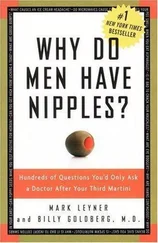We’re in a worse state than Jonathan Swift’s banker—we cannot reliably say who has our bonds and therefore our souls. Thanks to the packaging, repackaging, subcontracting, and outsourcing of even routine mortgages, millions of home “owners” have no idea who really holds their property or the terms by which they can be expelled from it. And nor do the banks.
According to the Office of the Comptroller of the Currency, by 2010 the U.S. financial system “owned” more than 230 trillion dollars’ worth of derivatives—or about four times the entire planet’s GDP. 102
It was Polonius who advised, “Neither a borrower nor a lender be,” and America at the dawn of the Obama era was approaching that blessed state.
A man who borrows $400,000 for a house he cannot afford isn’t really a “borrower,” is he? After all, by 2008 every politician agreed that the priority was to keep people in “their” homes, and the Congressional Progressive Caucus was soon calling for a “moratorium on foreclosures,” which is a polysyllabic way of saying there’s no need to make your monthly payments.
In what sense then is such a man “borrowing”?
And the banker who loaned the 400 grand isn’t a “lender” of anything terribly real, is he? Not in an era of banking as performance art. “We refused to touch credit default swaps,” the author and investment adviser Nassim Taleb said. “It would be like buying insurance on the Titanic from someone on the Titanic.” 103But a lot of people did just that. The Canadian commentator Jay Currie, waxing lyrical, put it this way: “If two people make a bet on the fall of a raindrop and each puts up, say, their shoes, the bet is a real bet. If they put up cash it is very close to a real bet. IOUs are not much of a bet. Someone else’s IOUs? Still less of a bet. A good deal of imaginary money is going to money heaven, which is sort of like saying that your stuffed animal is dead.” 104
Except that many people made real-world decisions with their dead imaginary money. You thought the house you bought for a hundred grand was now worth a quarter-mil and so you took out a home-equity loan to buy a camper or to send your kid to private school. Your stuffed animal has died, but you’ve still got a real vet’s bill to pay.
And then, just to pile on, the government steps in to replace all that dead imaginary money with real (or realish) money. Having, in effect, colluded in the destruction of meaningful risk-evaluation, Washington decided it was obliged to act—not to prevent a Thirties-style “credit crunch” but to prop up an unsustainable form of mock credit that had led to the crisis in the first place. The state’s response to the downturn was to insist that we needed to re-inflate the credit bubble. If someone punctures your balloon, you can huff and puff into it all you want, but you’re never going to get it up in the air again. The Obama administration blew a trillion dollars of “stimulus” into the punctured credit balloon, and it flew out the gaping hole in the back, dropped into the Potomac, and floated out to sea.
“Borrowing,” continues Polonius, “dulls the edge of husbandry”—and that goes double for government, whose husbandry is dulled in the best of times. The state spends too much. So the individual spends too much. The state hires too many people on whom it lavishes too many benefits. So those foolish enough to remain in the private sector have to pay for the benefits of the public sector, and fund both their basics (housing) and their baubles (plasma TVs) through debt. At the start of the Reagan administration, America was the world’s largest creditor nation and its citizens had a 10 percent savings rate. 105Not today: By 2007, the average U.S. household had debts equivalent to 130 percent of income. 106Keynes’ view of the economy derived from the premise that a government treasury was not a family purse, and so the state, unlike the household, could borrow to “invest.” Now, the family purse has caught up: Governments and individuals alike borrow extravagantly—and to “consume” in the most transient sense rather than invest in anything meaningful.

SLOW BOAT TO CHINA
The intellectual cover for America’s structural deformation was provided by “globalization.” Some of us have always been in favor of the “global economy.” If I want to buy a CD or a sofa, I don’t think it’s any business of the government whether it comes from Cleveland or Milan or Ougadougou.
As Adam Smith and John Stuart Mill will tell you, free trade has been indispensable to economic vitality from the Netherlands to Bengal. But you no longer hear much about “free trade.” That humdrum, prosaic supply-and-demand concept yielded to a glittering new coinage: “globalization,” less a commercial mechanism than an ideology.
But what does this mysterious metaphysical force called “globalization” actually boil down to? At the end of 2008, a few weeks after Barack Obama’s historic election, the media reported on America’s Christmas shopping spree. “Retail Sales Plummet,” read the headline in the Wall Street Journal .
“Sales plunged across most categories on shrinking consumer spending.” 107
That’s great news, isn’t it? After all, everyone knows Americans consume too much. What was it that then Senator Obama had said on the subject only a few months before? “We can’t just keep driving our SUVs, eating whatever we want, keeping our homes at 72 degrees at all times regardless of whether we live in the tundra or the desert and keep consuming 25 percent of the world’s resources with just four percent of the world’s population, and expect the rest of the world to say, ‘You just go ahead, we’ll be fine.’” 108
And by jiminy, we took the great man’s words to heart. SUV sales nosedived, and 72 is no longer your home’s thermostat setting but its current value expressed as a percentage of what you paid for it. If I understand the president’s logic, in a just world Americans would be 4 percent of the population and consume 4 percent of the world’s resources. And in his first year in office we made an excellent start toward that blessed utopia: Americans were driving smaller cars, buying smaller homes, giving smaller Christmas presents.
And yet, strangely, the Obama administration wasn’t terribly happy about the Obamafication of the U.S. economy. The Democrats immediately passed a bazillion dollar “stimulus” package to “stimulate” us back into our bad old ways, and, when that didn’t work, Ben Bernanke at the Federal Reserve printed another gazillion dollars in “quantitative easing” to lure us back into the malls.
And how did the rest of the world, of whose tender sensibilities Senator Obama was so mindful, feel about the collapse of American consumer excess? They were aghast, and terrified—as you would be if you suddenly found yourself strapped into a nightmare ride on a one-way express elevator into the abyss.
They didn’t put it that way, of course. Economics correspondents instead penned erudite thumbsuckers about how the global economy needed to restore aggregate demand. Which is a fancy term for you—yes, you, Joe Lardbutt, the bloated, disgusting embodiment of American excess, driving around in your Chevy Behemoth, getting two blocks to the gallon as you shear the roof off the drive-thru lane to pick up your $7.93 decaf gingersnap-mocha-pepperoni-zebra mussel frappuccino, which makes for a wonderful thirst-quencher after you’ve been working up a sweat watching the 78” TV in your rec room with the thermostat set to 87. The message from the European political class couldn’t be more straightforward: if you crass, vulgar Americans don’t ramp up the demand, we’re kaput. Unless you get back to previous levels of planet-devastating consumption, the planet is screwed.
Читать дальше












